Translating discoveries into medicines
Scientists across the globe are searching for information that could help develop treatments for diseases because they are desperately needed.
In the next five years, there will be a 56% increase in chronic disease, which will put an enormous strain on the health care system.
But for discoveries to become drugs, they must be commercially viable. Translating discoveries into drugs is difficult, and most discoveries never get there.
Associate Professor Mark Smythe has dedicated his career to developing medicines for patients by translating chemistry into high-value medicine. And he’s very good at it.
Group leader

Associate Professor Mark Smythe
Group Leader, Combinatorial chemistry and molecular design
+61 7 3346 2977
m.smythe@imb.uq.edu.au
UQ Experts Profile
It takes 13 years and billions of dollars to get a drug to market. It is a difficult thing to do. You have to be prepared to fail, and you have to start from an excellent foundation.
You have to start with the right molecule. To get my attention, molecules must have a biological target within a mechanistic disease pathway. A mechanistic disease pathway is a step-by-step process impacting on the disease state. The molecule must be capable of blocking or activating that pathway with a favourable response.
Then I ask if we can block or activate this pathway, who cares? Will it be good for the patient and benefit society? And if so, will it be commercially viable?
We optimise the chemistry to probe these questions. Starting in the test tube, we then move on to a cell, an animal and then into the clinic.
I don’t want to fail because of what I don’t know. If I’m going to ask people to invest in a question, then I do everything I can to answer the hypothesis.
We are is currently working on a drug to block the initial inflammatory event that sets off an asthma attack.
We are also developing a new drug for Inflammatory Bowel Disease that can be taken orally and is more targeted than existing treatments.
Targeted therapies for treatment of Asthma
Asthma is one of the most common chronic respiratory diseases in developed countries. Most patients manage the disease through a combination of fast-acting relief, including beta2-agonsists, and long-term medications, such as corticosteroids. However, these therapies provide non-specific anti-inflammatory treatment of the underlying disease and only offer patients symptomatic relief. Asthma is an inflammatory disorder and new targeted, anti-inflammatory drugs are desperately needed to provide more efficacious treatment for these patient groups. Hematopoietic prostaglandin D2 synthase (HPGD2S) is the enzyme responsible for the overproduction of PGD2 and is also a well-validated drug target for treatment of asthma and allergic rhinitis. The addition of the product (PGD2) of the enzyme target (HPGD2S) in humans is known to induce asthma. We have developed a series of lead compounds as potent and specific inhibitors of HPGD2S that are orally bioavailable and efficacious in in vivo animal models of asthma.
Patterned Baldness
Patterned hair loss, also known as androgenetic alopecia (AGA), affects an estimated 50 million men and 30 million women just in the United States alone. As compared to individuals with a healthy scalp, prostaglandin D2 (PGD2) levels are significantly higher in those experiencing AGA. Prostaglandin D synthase (PGDS) is an enzyme that catalyzes the formation of PGD2. There are two types of PGDS, lipocalin-type PGDS (L-PGDS) and haematopoietic PGDS (H-PGDS). The overall aim of this project is to develop small molecule inhibitors of L-PGDS that are more effective therapeutics for AGA, with little to no side effects.
Development of spin label amino acid analogues for structural biology
Biological systems and processes are inherently dynamic, transient and complex. Electron paramagnetic resonance (EPR) spectroscopy of site-directed spin labeled (SDSL) biomolecules is a powerful tool for studying the structure and dynamics of peptides and proteins. It has been used to study the biomechanics of muscle contraction, the genesis of Alzheimers disease, mechanisms of Calcium transport and the structure of membrane proteins, to name a few. Compared to other complementary techniques, such as NMR and X-ray crystallography, EPR is suited to disordered proteins, large macromolecules and membrane-bound proteins. The overall aim of this project is to develop a “tool box” of spin labeled amino acids that can be incorporated into the backbone or side chain of peptides and proteins with little impact on the structure, dynamics or function of the peptide or protein resulting in significant improvement in interpreting ESR spectra for the deciphering of functional aspects of protein recognition and biology.
New drug modalities
The pharmaceutical industry faces a productivity crises driven by escalating Research and Development costs with lower success rates of drugs entering the market. This in an era of genomic technologies revealing genetically validated targets to treat disease. There is emerging evidence that new classes of molecules are needed to provide the medicines of the future. We have strong track record of pursuing and ultimately commercialising novel chemical modalities to develop as drug-candidates for difficult drug targets. In this project, we use chemical engineering strategies to pursue a new class of drug candidates we have coined “antibodies with teeth”.
Research title: Drug Discovery and Development
Summary of research interests: We work on developing new drug candidates to treat diseases that have significant unmet medical need. This includes both applied research, the discovery and development of drug candidates at specific disease targets, and basic research, the development of new methods and tools to facilitate the drug discovery process. Research outcomes are typically commercialised in spin-out companies, with numerous discoveries successfully translated to the clinic and in late-stage preclinical development. We have strong linkages to clinicians and the pharmaceutical industry. Projects are offered in the disciplines of drug design, mathematics, chemistry and biology, as related to the development of drugs for specific therapeutic targets.
Traineeships, honours and PhD projects include
- Optimisation of drug candidates for treatment of asthma
- Optimisation of drug candidates for treatment of breast cancer
- Synthesizing new chemical probes to unravel biological pathways
- Expanding constrained peptide evolution strategies to facilitate drug discovery
- Antibodies with teeth, a new therapeutic modality.
Journal Article: Clustering of disulfide-rich peptides provides scaffolds for hit discovery by phage display: application to interleukin-23
Barkan, David T., Cheng, Xiao-Li, Celino, Herodion, Tran, Tran T., Bhandari, Ashok, Craik, Charles S., Sali, Andrej and Smythe, Mark L. (2016) Clustering of disulfide-rich peptides provides scaffolds for hit discovery by phage display: application to interleukin-23. BMC Bioinformatics, 17 481: . doi:10.1186/s12859-016-1350-9
Journal Article: Discovery and characterization of a potent interleukin-6 binding peptide with neutralizing activity in vivo
Ranganath, Sheila, Bhandari, Ashok, Avitahl-Curtis, Nicole, McMahon, Jaimee, Wachtel, Derek, Zhang, Jenny, Leitheiser, Christopher, Bernier, Sylvie G., Liu, Guang, Tran, Tran T., Celino, Herodion, Tobin, Jenny, Jung, Joon, Zhao, Hong, Glen, Katie E., Graul, Chris, Griffin, Aliesha, Schairer, Wayne C., Higgins, Carolyn, Reza, Tammi L., Mowe, Eva, Rivers, Sam, Scott, Sonya, Monreal, Alex, Shea, Courtney, Bourne, Greg, Coons, Casey, Smith, Adaline, Tang, Kim, Mandyam, Ramya A., Masferrer, Jaime, Liu, David, Patel, Dinesh V., Fretzen, Angelika, Murphy, Craig A., Milne, G. Todd, Smythe, Mark L. and Carlson, Kenneth E. (2015) Discovery and characterization of a potent interleukin-6 binding peptide with neutralizing activity in vivo. PLoS One, 10 11: 1-19. doi:10.1371/journal.pone.0141330
Journal Article: Conformational searching using a population-based incremental learning algorithm
Long, Stephen M., Tran, Tran T., Adams, Peter, Darwen, Paul and Smythe, M. L. (2011) Conformational searching using a population-based incremental learning algorithm. Journal of Computational Chemistry, 32 8: 1541-1549. doi:10.1002/jcc.21732
We are a commercially focussed research group translating academic discoveries into start-up companies and license deals with the pharmaceutical sector. Some of these commercial enterprises have raised > AU$170M in commercial funding and resulted in licensing compounds for valuations exceeding AU$1B.
Our projects are multidisciplinary and focus on achieving medical outcomes. Several of them involve partnerships with industry. They range from technology development and early drug discovery to Investigational New Drug enablement. Using a combination of mathematics, software development, drug design, medicinal chemistry, pharmacology, structural biology and phage display, we are developing new approaches to treat diseases with unmet medical need. We have active late-stage preclinical programs in diverse therapeutic areas such as asthma, pain, iron overload disorders, and inflammatory bowel disease.
We collaborate widely with clinicians and researchers on the application our chemical methods to relevant biology underpinning disease. Associate Professor Simon Phipps heads the respiratory neuroscience and mucosal immunity laboratory at the University of Queensland and has world-leading models of Asthma. Associate Professor Kiarash Khosrotehrani is a clinical scientist interested in skin biology, regenerative medicine and skin cancer at the University of Queensland. Kiarash has validated animal models of hair loss. Professor Garland Marshall is Professor of Biochemistry & Molecular Biophysics and of Biomedical Engineering at Washington University and has broad research interests in molecular recognition with a focus on experimentally determining precise intermolecular distances in biomolecular complexes using modern pulse EPR spectrometers.
Latest news
-
-
IMB brings home the GENE Awards
17 November 2023
General enquiries
+61 7 3346 2222
imb@imb.uq.edu.au
Media enquiries
IMB fully supports UQ's Reconciliation Action Plan and is implementing actions within our institute.
Support us
Donate to research
100% of donations go to the cause






